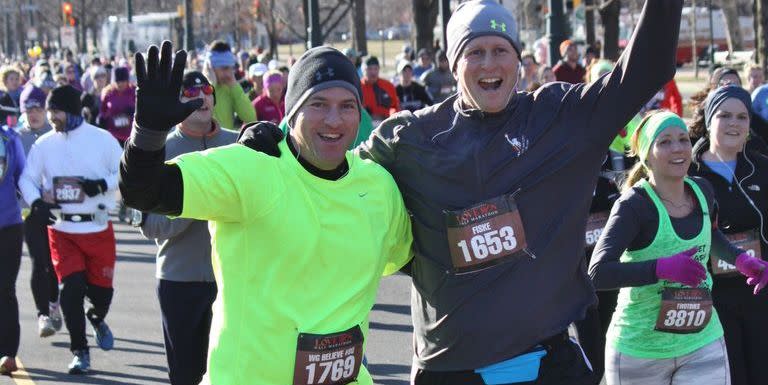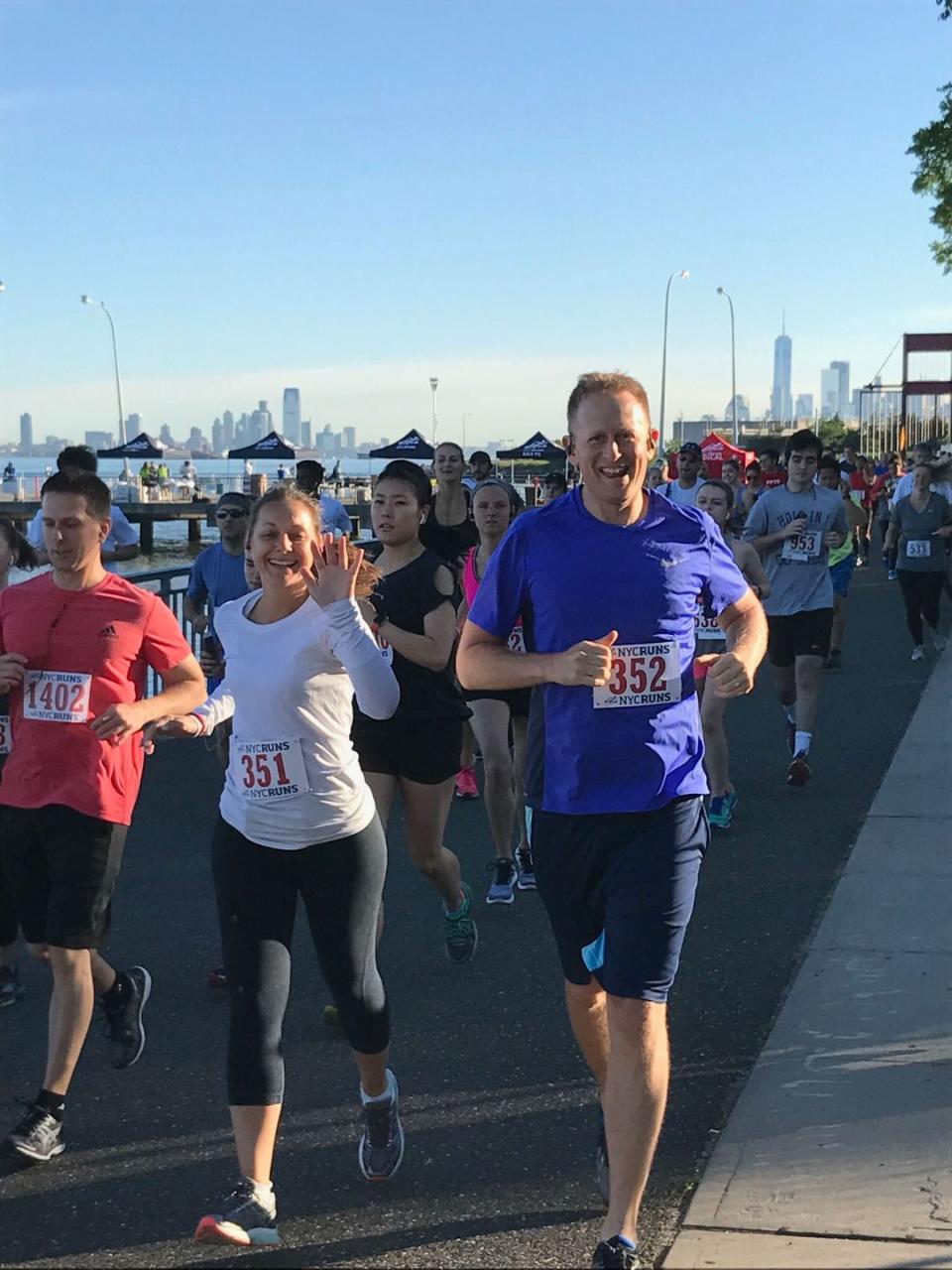This 46-Year-Old Marathoner Was Hospitalized With COVID-19. Here’s What Happened.

This story was originally published on May 18 by our partners at Runner’s World.
It’s amazing how quickly your life can change. On Saturday, March 14, I was still my healthy, normal self. I ran the five-mile loop I do on most weekends, then hung out with my wife and our two boys at our home in Livingston, New Jersey.
Then three days later, on March 17, I woke up sweating in my sheets at 4 a.m. I took my temperature, and it read 101 degrees. It wasn’t too high of a fever, but it immediately worried me. I work as a urologist at the Overlook Medical Center in Summit, New Jersey, and I knew that coronavirus (COVID-19) had been spreading throughout our community. I decided to not take any chances and began to isolate in our basement, away from the rest of my family.
Since I’m a doctor, I was eligible to be tested for the virus, so I had a test done early the next morning. Two days later, the results confirmed what I had feared: I was positive for COVID-19.
The next few days passed by with mild symptoms. My fever hovered around 100 degrees, but that was it—I didn’t have any coughing or chest tightness. I watched a lot of SportsCenter to keep my mind off the news.
I texted my friends to tell them that that I was doing fine; I thought I just had a mild case of the virus, and that it would all be over in a few days. After all, I’m 46 years old, I don’t have any medical issues, and I run four times a week. Over the last seven years, I have finished numerous half marathons and the New York City Marathon. I figured I was in the clear.
Racing to survive
Then on March 23, my fever spiked up to 104. My doctor, with whom I had been FaceTiming throughout my time in isolation, didn’t like the way I looked and suggested that I go into the ER immediately. After undergoing a lung scan in the ER, I found that I had bilateral pneumonia, which is a serious complication of COVID-19. The weird thing was that I felt fine—my lungs were still at a 98% oxygen level. I didn’t feel like I had pneumonia.
It was a good thing I went to the hospital when I did, because over the next 48 hours, I became really sick. My oxygen levels lowered to 91 percent. A new chest X-ray showed that the infection had worsened in my lungs. I didn’t have a cough or severe chest tightness, but I felt like I was living in thin air. When I tried to walk across the room to go to the bathroom, I felt like I had just finished hiking a challenging route at altitude in Colorado. I never got short of breath, but every little movement took a ton of effort.
My doctors soon figured out that what I was experiencing was a cytokine storm, which is when the body’s immune response to the virus is so strong that it begins to attack its own cells and tissues. Basically, my body was shutting off my lungs. Our bodies usually know when to turn themselves off, but COVID-19 in particular seems to cause this overreaction.
By March 25, my oxygen levels had dipped so low—to 86 percent—that the doctors began discussing moving me to a ventilator. That was definitely not the preferred option, since ventilators can sometimes lead to even more inflammation in the body, and can cause serious organ damage. My other option was to take a strong anti-inflammatory drug called Actemra, which halts the body’s immune response. The problem with that option, of course, was that my body wouldn’t be able to fight off any remnants of the virus.
They ended up giving me the medication, and within an hour or two, my fever waned for the first time in five days. Over the next three days, my oxygen levels climbed back to 93 percent. I began walking up stairs again, and while this exercise made me winded, I could tell I was getting better. I was finally discharged from the hospital on March 30, one week after I first arrived.
Gaining lung strength again

Once I got home, I isolated myself in my basement for the next week. During this time, my top priority was gaining my lung strength back. Based on what doctors have told me and my own observations, the sooner COVID-19 patients begin to retrain their lungs, the shorter their recovery time. And as a runner, my chief concern was not being able to run and be active again.
To expand and strengthen my lungs, I did deep breathing exercises, yoga, and meditation. I used an incentive spirometer to measure the volume of air my lungs could hold at a time, and tried each day to better my mark from the day before. When I first left the hospital, I could only inhale 400 milliliters of air at once. But a week later, I raised my level to 3,700 milliliters. (For reference, the average adult male can hold 6,000 milliliters, or six liters, of air in his lungs.)
I finally ventured out of my basement and rejoined my family on April 6. It felt like so much time had passed. Three days later, on April 9, my son and I went on a run, my first one back. We did two miles at 12:00 pace, and it was the hardest two miles I’ve ever done. Usually, that’s a pace at which I can carry a conversation, but that wasn’t the case for this run.
I was exhausted, both because of my weakened lungs and because I hadn’t moved in about three weeks. My son was concerned for me, but I was so happy to be out there again.
As of May 12, I’ve been running every other day, usually doing three to four miles on the weekdays and five miles on Saturday. I try to get at least 35 minutes of cardio every day, whether that’s by running or another exercise. Pace-wise, I’m slower by about a minute or two per mile than what I ran pre-coronavirus. My wife kicks my ass, and my boys can run circles around me when I run, but it’s all good.
I’m enjoying running again; last fall, my motivation had slipped a bit, and running was sort of a drag. Now, I have a great running mindset. I’m into it. I know for a fact that had I not been a runner, I would have never had the mental and physical strength to survive this disease. I’m grateful to have it in my life, and I’m even more grateful to get back into it again, slowly and steadily.
You Might Also Like

